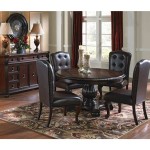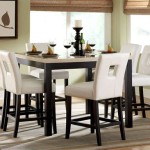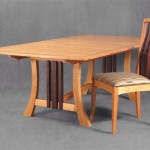Convert Dining Room Into Office: A Guide to Creating a Functional Workspace
Working from home has become increasingly common, and for many, the dining room has become a natural choice for setting up an office. This space offers a convenient and often underutilized area that can be transformed into a productive workspace. Converting your dining room into an office requires careful planning and consideration of factors such as lighting, ergonomics, and storage. This guide will provide you with the necessary steps to create a functional and stylish home office in your dining room.
1. Define Your Needs and Space
Before embarking on the transformation, it's essential to assess your needs and the available space. Consider the type of work you'll be doing, the equipment you require, and the number of people who will be using the space. A good understanding of your requirements will help you determine the layout, furniture, and storage solutions needed.
Measure the dining room area and sketch a rough plan. This will allow you to visualize the potential arrangement of furniture, including a desk, chair, storage units, and any other necessary equipment. Remember to leave enough space for comfortable movement and maintain a sense of flow within the room. Consider the natural light sources and the placement of windows, as they will impact the brightness and feel of your office space.
2. Choose the Right Furniture
The furniture you select will play a crucial role in creating a comfortable and functional workspace. A sturdy desk with ample surface area is essential, providing a dedicated space for your laptop, documents, and other work materials. Opt for a comfortable and supportive chair that encourages good posture and minimizes fatigue. Ergonomic chairs with adjustable features are highly recommended.
If you plan to use the dining room for both work and dining, consider furniture that can adapt to both functions. Extendable tables or desks with storage compartments can offer a versatile solution. If storage is a concern, a bookshelf or filing cabinet can provide ample space for organizing documents, supplies, and personal items.
3. Optimize Lighting and Acoustics
Lighting is crucial for eye strain and productivity. Ideally, your office space should have a combination of natural and artificial light. Ensure that your desk is positioned near a window for natural light during the day. In the evenings, use a combination of overhead lighting and desk lamps to provide adequate illumination.
Acoustic control is equally important. Consider using sound-absorbing materials to dampen noise, especially if you live in a busy household. Carpet, curtains, or acoustic panels can help to reduce echoes and create a quieter work environment.
4. Storage and Organization
Organizing your workspace is essential for productivity and maintaining a sense of calm. Utilize shelves, drawers, and other storage solutions to keep your files, supplies, and equipment organized. Labeling and using clear containers can make it easier to find what you need quickly.
Consider using vertical space efficiently. Wall-mounted shelves, floating cabinets, and hanging organizers can maximize storage while keeping the floor clear. If you have limited space, a compact filing system or a rolling cart can be a practical solution.
5. Add Personal Touches
While practicality is important, don't forget to personalize your office space. Adding personal touches like artwork, plants, and decorative accents can create a more inviting and inspiring environment.
Plants can not only enhance the aesthetics but also improve air quality. Consider placing a small succulent or a low-maintenance indoor plant on your desk or bookshelf. A cozy rug or a comfortable throw blanket can add warmth and comfort to the space.
6. Integrate Technology
In today's digital world, technology plays a crucial role in our work lives. Ensure that your dining room office has adequate electrical outlets and internet connectivity. Consider installing a surge protector to safeguard your devices from power surges.
If you're using video conferencing regularly, invest in a high-quality webcam and microphone for clear communication. A comfortable headset can also improve the quality of your calls and reduce distractions.
7. Maintain a Clear Separation
While converting your dining room into an office, it's important to maintain a distinction between work and personal life. Consider using a room divider, a screen, or a simple folding screen to designate a specific area for work. This separation will help you mentally switch between work mode and relaxation mode.
When you're not working, try to clear your desk and put away any work-related items. This will help you create a sense of fresh start when you return to your office space.

How To Use Your Dining Room As An Office Ideas Hgtv

A Dining Room Turned Office Decorchick

Turning A Dining Room Into Home Office Contemporary Library Atlanta Houzz

Converted Dining Room Into Office

Ditch The Dining Room And Opt For Office Closings Car Seats

How To Convert Your Dining Room Into A Home Office Sara Hillery Interior Design

A Dining Room Turned Office Decorchick

Using Your Dining Room As Home Office Could You Do It Lori May Interiors

Formal Dining Rooms Turned Offices

Another Dining Room To Office Transformation Emily A Clark








